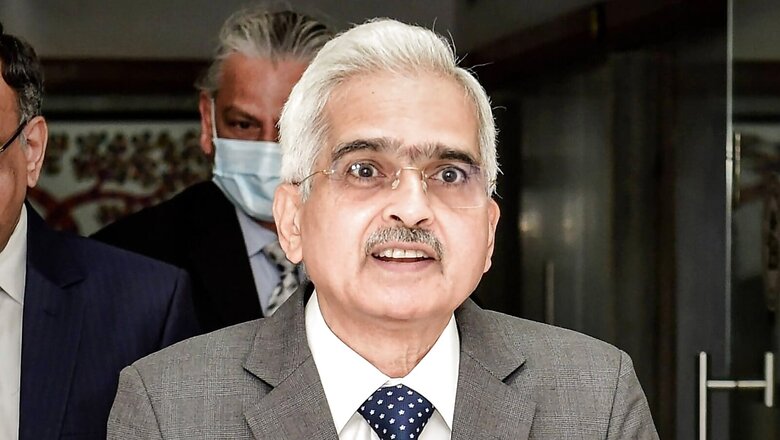
views
RBI Governor Shaktikanta Das said that in the current turbulent global environment, the resilience exhibited by Indian financial markets reflects the robust macroeconomic fundamentals of the economy. He added that it also points towards the proactive and strategic policy interventions to mitigate the impact of the two black swan events that have occurred in quick succession — the COVID-19 pandemic and the war in Europe.
Addressing an FIMMDA annual event titled ‘Financial Market Reforms: Approach and Expectations’ in Mumbai on Monday, Das said the monetary policy will remain “watchful, nimble-footed and calibrated” in order to ensure price stability while supporting growth.
In order to control inflation, the RBI in early August raised the key repo rate by 50 basis points (bps). Since May this year, the Reserve Bank of India (RBI) has increased its repo rates by as much as 140 basis points. Inflation has cooled off since then, but is still over the RBI’s upper tolerance limit.
“The RBI remains committed to support the market with two-way operations, as warranted, in line with the revised liquidity management framework. The RBI will also strive to ensure stable money market conditions, the smooth conduct of the primary auctions in G-secs and facilitate the orderly evolution of the yield curve,” he added.
The RBI Governor said it is useful to take stock of India’s macroeconomic fundamentals and buffers, and assess them in the current and evolving conditions. First, India is widely perceived to be among the fastest growing major economies in the world in 20222, when the other major economies may encounter recession or considerable moderation in their growth momentum.
He also said, “The favorable growth differential of India provides confidence to investors. This is amply reflected in the surge of portfolio flows into India since July 2022. Inflows in August alone at US$ 7.5 billion are more than 16 times the net inflows in July. Second, the recent softening of commodity prices and supply chain pressures have eased the terms of trade shock that India faced in the aftermath of the pandemic and the war. With the consequent easing of imported inflation pressures, India’s CPI inflation has peaked in April 2022. Further, the average Indian basket crude price in August at USD 97.4 per barrel has turned out to be lower than what we had assumed for the full year – USD 105 per barrel – in the monetary policy resolution of August 5.”
Das added that India’s inflation is lower than a large number of its trading partners.
Retail inflation in India in July eased to 6.71 per cent, as compared with 7.01 per cent in the previous month.
“The shift in the commodity price outlook is also altering the assessment of India’s current account deficit in 2022-23, which is now expected to remain well within sustainable levels. At a time when food security is threatened the world over by shortages and soaring prices, India’s large buffer stocks of food grains supplement domestic supply and assure food security domestically,” he said.
On the rupee depreciation, the RB governor said that while the US dollar has appreciated by 11.8 per cent during the current financial year so far, the rupee has depreciated by 5.1 per cent, which is among the lowest in the world.
“Reflecting these fundamental factors, the Indian rupee has moved in an orderly manner in the current financial year so far. It has held its own in a world of sharp depreciation across other EME and AE currencies… The RBI is in the market on a regular basis, providing liquidity and confidence so as to facilitate its smooth and normal functioning,” he said.
Read all the Latest Business News and Breaking News here




















Comments
0 comment